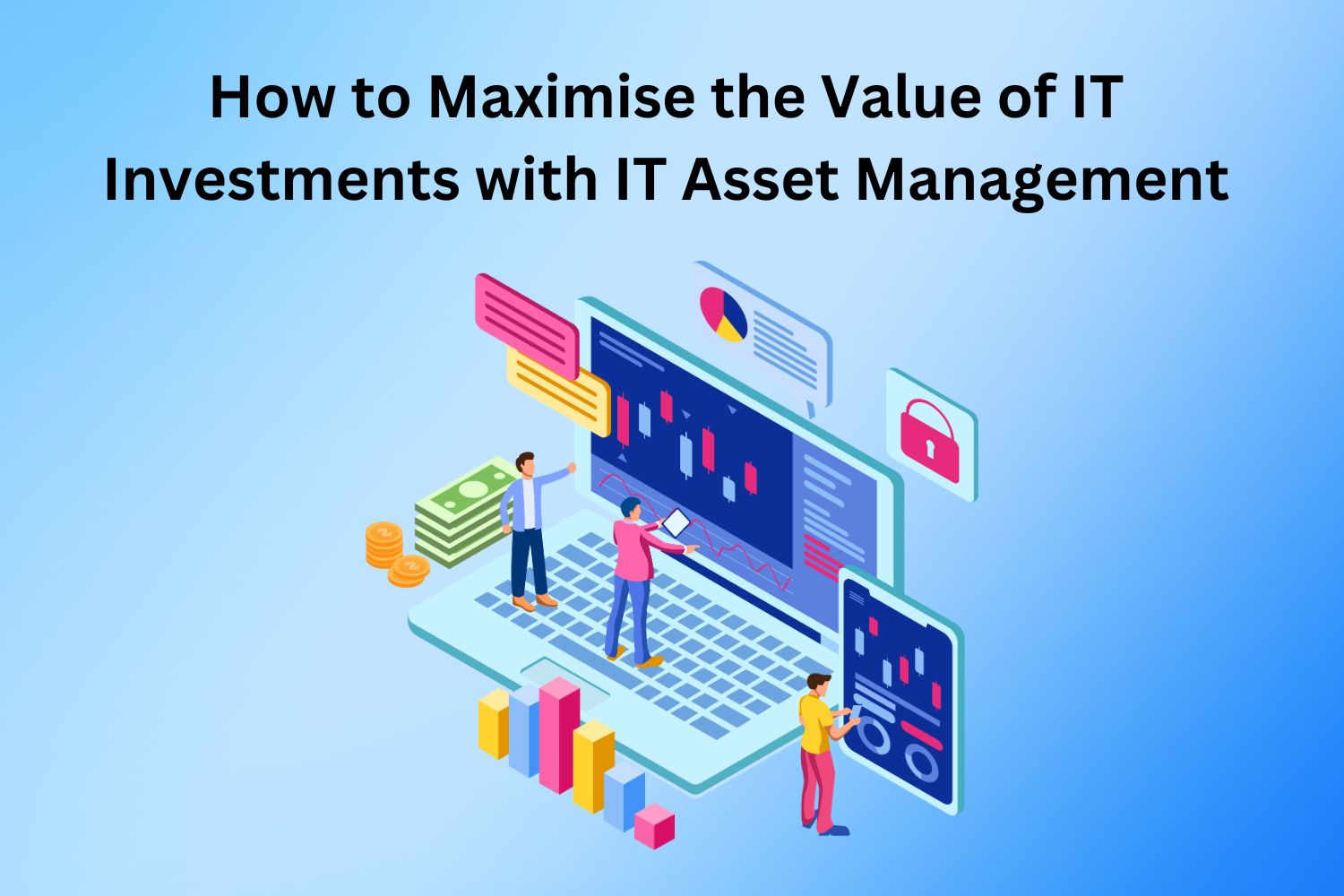 Information Technology (IT) performs a important role in the achievement of organizations throughout industries. Businesses make investments drastically in information technology resource , such as infrastructure, software, hardware, and licences. Unproductive management, on the other hand, can motive those assets to become unused, out of date, or maybe lost, which in turn indicates resources to go to waste and possibilities to head unrealised. Organisations may maximise the return on investment (ROI) from their information technology (IT) investments with the help of IT asset management (ITAM), a systematic method to handling and controlling IT property across their whole lifecycle.
Information Technology (IT) performs a important role in the achievement of organizations throughout industries. Businesses make investments drastically in information technology resource , such as infrastructure, software, hardware, and licences. Unproductive management, on the other hand, can motive those assets to become unused, out of date, or maybe lost, which in turn indicates resources to go to waste and possibilities to head unrealised. Organisations may maximise the return on investment (ROI) from their information technology (IT) investments with the help of IT asset management (ITAM), a systematic method to handling and controlling IT property across their whole lifecycle.
In this blog post, we will discuss the importance of IT Asset Management and strategies for maximising the value of IT investments through effective asset management practices, complemented by ITIL Certification, a fundamental aspect of ITIL Asset Management.
Table Of Contents
-
Comprehensive Asset Inventory
-
Centralised Asset Management
-
Lifecycle Management
-
License Compliance and Optimisation
-
Cost Transparency and Budget Control
-
Risk Management and Security
-
Performance Optimisation
-
Conclusion
Comprehensive Asset Inventory
Accurately cataloguing an business enterprise's IT property is first step in making the most of those investments. This class consists of virtual assets, software program licences, and hardware, along with servers, desktops, laptops, and mobile devices. By keeping an correct inventory, enterprises can see what's occurring with their IT infrastructure, monitor when assets are accessible and used, and discover ways to save money and improve overall performance.
Centralised Asset Management
Centralising asset management is vital to streamlining IT processes and guaranteeing organisational uniformity. A centralised IT asset management solution enables organisations to streamline operations, automate workflows, and consolidate asset data. Because of this, IT departments can keep tabs on asset lifecycles, ensure everyone is following the rules regarding licencing, and maximise the use of their assets. In addition, with centralised asset management, there is just one place to go for accurate information on IT assets, which helps us make intelligent decisions and allocate resources.
Lifecycle Management
Good lifecycle management is a need to get the maximum out of IT investments at the same time as maintaining standard ownership costs down. The full spectrum of an IT asset's existence, from acquisition and installation via retirement and eventual disposal, is covered with the aid of IT asset management.
License Compliance and Optimisation
Software licences are an high-priced funding for businesses, and fines and legal consequences for not following the terms of a licence settlement may be intense. By maintaining careful tabs on software program entitlements and usage, IT Asset Management allows agencies stay in keeping with their software licensing agreements. By redistributing unwanted or underutilised licences, ITAM also aids organisations in optimising software licence utilisation. Businesses may save money, work smarter, and avoid fines for not using their software licences properly.
Cost Transparency and Budget Control
Improved budgeting and resource allocation are made more accessible with clearer visibility of IT spending. Thanks to Efficient IT Asset Management, businesses can monitor their IT spending closely. Organisations may optimise their IT budgets, find areas of overspending, and minimise wasteful expenses by tracking IT assets and associated costs in real-time. Additionally, IT asset management facilitates value transparency by revealing the complete cost of ownership of IT assets, which incorporates acquisition, upkeep, and aid expenses. As a result, businesses might also prioritise IT tasks based on their predicted go back on investment and make information-driven decisions concerning IT spending.
Risk Management and Security
Effective management of IT property is essential for decreasing safety risks and safeguarding sensitive data in threat management. By keeping a particular inventory of IT property and tracking their configuration and compliance status, IT Asset Management assists firms in figuring out and resolving security problems. Organisations can reduce the possibilities of safety breaches and data breaches via setting up rules and techniques based totally on danger profiles of their assets. Also, with IT asset management, businesses can keep tabs on software patches and updates, which keeps IT assets secure and safe from new threats.
Performance Optimisation
IT Asset Management helps businesses efficiently utilise their IT systems by locating and fixing performance issues. Organisations can find ways to allocate resources better, simplify processes, and optimise IT settings by analysing asset utilisation and performance indicators data. Further, IT asset management (ITAM) sheds light on IT asset performance trends across time, letting businesses spot and fix problems before they affect service delivery or productivity. Organisations may additionally increase operational performance, lower downtime, and increase consumer happiness by using optimising the performance in their IT belongings.
Conclusion
By correctly coping with and controlling IT assets for the duration of their lifecycle, firms can also maximise the value of their IT investments. This is achieved through IT Asset Management, a strategic approach. Organisations can gain a lot by taking stock of their IT assets, centralising asset management, optimising performance, managing risk and security, achieving cost transparency and budget control, optimising licence compliance and optimisation, and implementing lifecycle management processes. These practices help save money, make better decisions, and enhance security.
 icons at the top right corner of the subsection.
icons at the top right corner of the subsection.